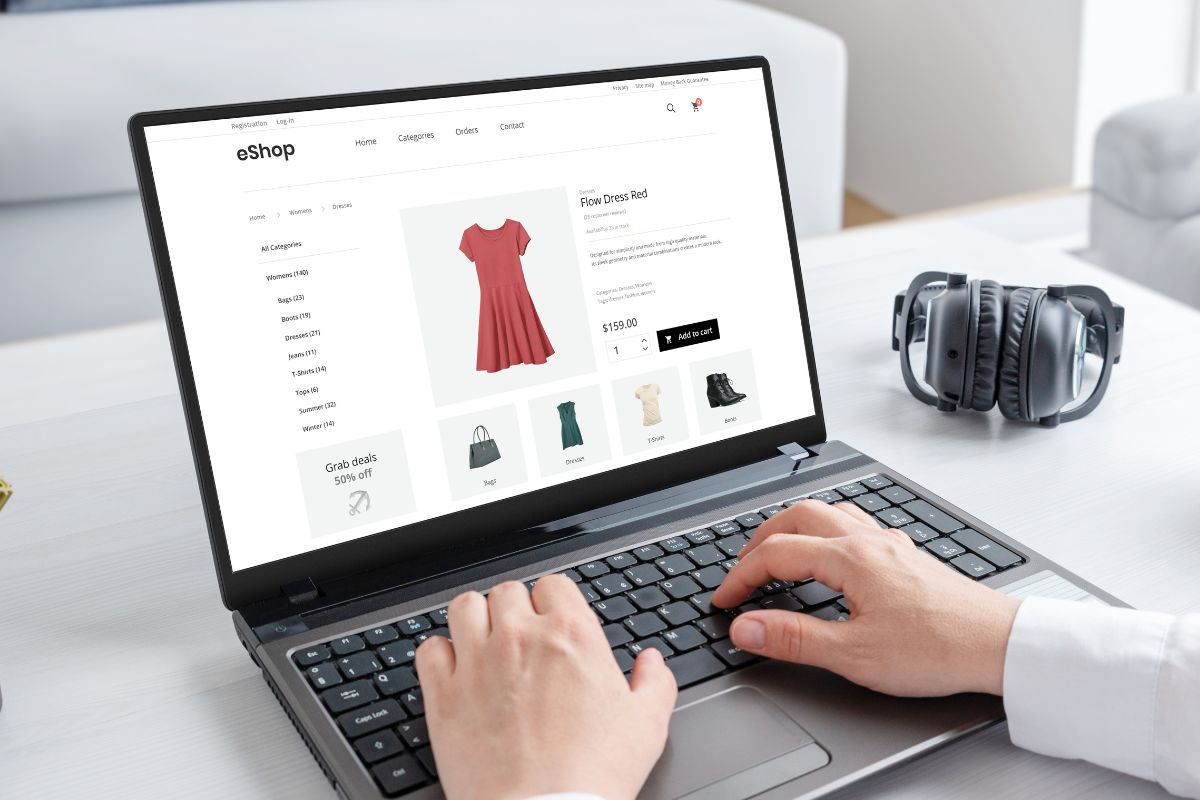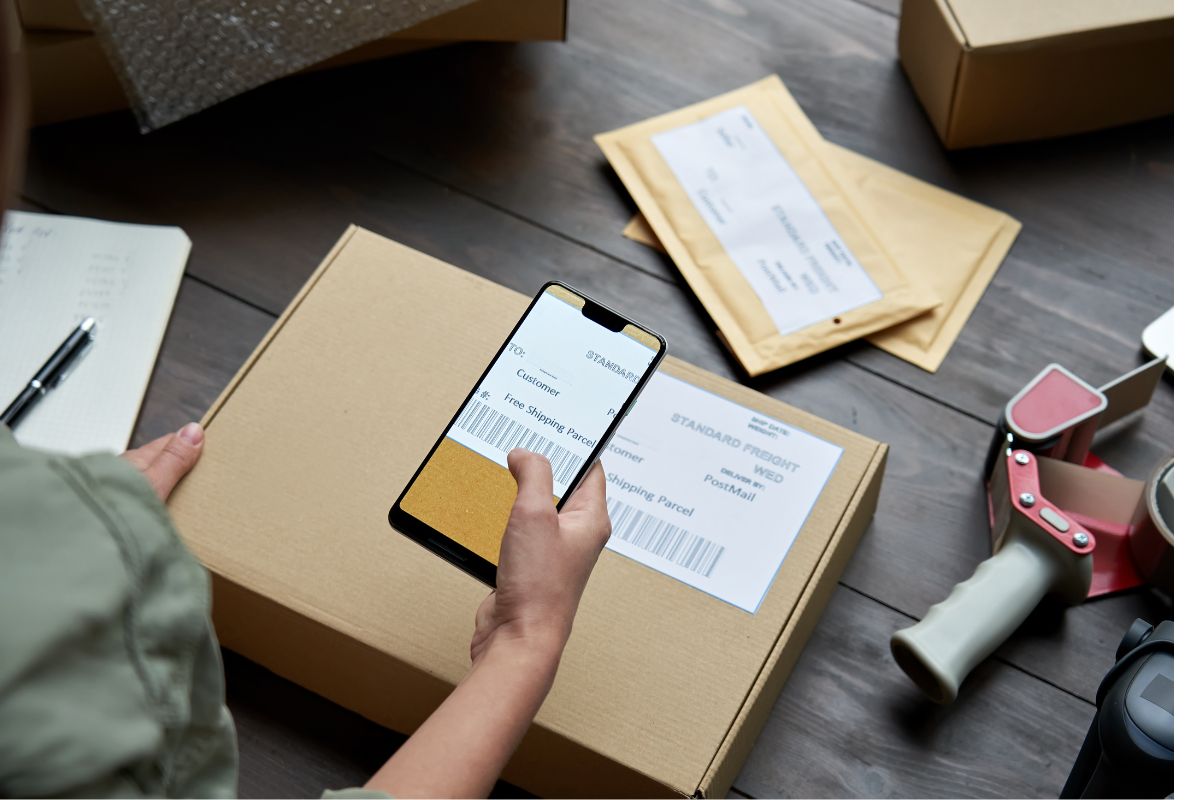Starting a dropshipping business can be an exciting way to enter the world of e-commerce.
The cost to start dropshipping can vary widely. Generally, it ranges from about $300 to $1,600, depending on the scale and tools you decide to use.
Understanding these costs will help you plan your budget effectively and determine the feasibility of your business idea.
Comprehensive Table of Contents for Dropshipping Costs and Insights
You will need to consider expenses such as setting up an online store, product sourcing, branding, and marketing.
Choosing the right platforms and suppliers can make a significant difference in your startup costs. Being strategic about your investments is important to ensure you get off to a successful start while keeping your expenses manageable.
With the right approach and a clear budget, you can navigate the dropshipping landscape and build a profitable business. This article will explore the various costs involved and offer tips on how to start dropshipping without breaking the bank.
Understanding Dropshipping
Dropshipping is a unique and accessible way to enter the e-commerce market. It allows you to sell products without having to manage inventory directly.
Here’s a closer look at the business model and its advantages and challenges.
Dropshipping Business Model
In the dropshipping business model, you act as a middleman between customers and suppliers. You set up an online store to showcase products. When a customer makes a purchase, you forward the order to the supplier, who ships the product directly to the customer.
This model requires minimal upfront investment. You don’t need to buy inventory, which reduces risk. Instead, you focus on marketing, customer service, and finding reliable suppliers.
This approach enables you to offer a wide variety of products without facing inventory-related costs. You can scale your business easily as demand increases.
Advantages and Challenges
One key advantage of dropshipping is low startup costs. You can begin with less than $100, depending on your choice of e-commerce platform and marketing methods. This makes dropshipping accessible for many aspiring entrepreneurs.
On the other hand, you face challenges, such as competition and quality control. As you don’t handle products directly, ensuring good quality can be hard. Researching suppliers is vital to avoid issues.
Additionally, profit margins may be thinner compared to traditional retail models. You need to set a pricing strategy that covers your costs while remaining attractive to customers. It’s essential to balance these factors for a successful dropshipping business.
Evaluating Startup Costs
| Expense | Estimated Cost (USD) | Details |
|---|---|---|
| Domain Name | $10 – $20 per year | Purchase a custom domain (e.g., GoDaddy, Namecheap). |
| E-commerce Platform | $29 – $79 per month | Shopify ($29+), WooCommerce (free but requires hosting), Wix, etc. |
| Website Hosting | $5 – $30 per month | Required for WooCommerce or other self-hosted platforms. |
| Dropshipping Supplier | $0 – $30 per month | AliExpress (free), Spocket ($24+), SaleHoo ($27+), etc. |
| Apps & Plugins | $0 – $50 per month | For automation, product research, and order fulfillment. |
| Marketing & Ads | $100 – $500+ per month | Facebook Ads, Google Ads, influencers, SEO, etc. |
| Branding & Design | $0 – $50 one-time | Logo, theme, product images (Canva, Fiverr, etc.). |
| Business Registration | $50 – $300 one-time | Optional but recommended for legitimacy. |
| Miscellaneous | $0 – $100+ | Additional tools, testing, and improvements. |
When starting a dropshipping business, understanding your costs is essential. Evaluating both your initial investment and ongoing expenses will help you create a realistic budget and ensure financial stability.
Initial Investment Analysis
The initial costs for a dropshipping business can vary based on your choices. Key expenses include:
- Ecommerce Store Setup: Expect to spend between $100 and $300 for a quality online store, including website design and hosting fees.
- Supplier Fees: Some suppliers may charge fees to access their products or platforms. These can range from $0 to $200, depending on the supplier.
- Payment Processor Fees: Payment platforms usually take a small percentage of each transaction. You might pay around 2.9% plus $0.30 per sale.
- Inventory Costs: With dropshipping, you do not hold inventory, which reduces upfront costs.
In total, a basic startup budget can be as low as $132, but $500 is safer to cover unexpected costs.
Recurring Expenses
In addition to your initial investment, you need to plan for ongoing expenses. These might include:
- Monthly Hosting Costs: Typically ranging from $10 to $50, depending on the service you choose.
- Payment Processing Fees: These are ongoing costs that impact your profits and can accumulate quickly based on your sales volume.
- Advertising Expenses: This is often essential for visibility. You might allocate anywhere from $50 to $500 monthly for ads, depending on your strategy and market.
When evaluating these costs, track them closely to maintain profitability. Understanding both initial and recurring costs will help ensure your dropshipping venture is sustainable.
Selecting an Ecommerce Platform

Choosing the right e-commerce platform is crucial for your dropshipping success. You’ll face several options, each with its own strengths. The choice can determine how easily you can manage your online store and meet customer needs.
Shopify Overview
Shopify is a leading e-commerce platform popular for its user-friendly interface. It allows you to set up an online store quickly without any coding skills.
Key features include:
- Ease of Use: Intuitive design helps you create your store in minutes.
- Shopify App Store: You can enhance your store’s functionality with various apps for marketing, shipping, and customer support.
- Payment Options: Supports multiple payment gateways for your convenience.
Pricing plans start low, making it accessible for beginners. As your business grows, you can upgrade for more features, making Shopify scalable for future needs.
Comparing Alternatives
While Shopify is a strong option, consider other platforms like Wix and WooCommerce.
Wix is known for:
- Drag-and-Drop Builder: Simple interface for those unfamiliar with web design.
- Templates: Offers many customizable templates for a professional look.
WooCommerce is a WordPress plugin that offers:
- Flexibility: Highly customizable for users who are more tech-savvy.
- Cost-Effective: Can be cheaper if you already have a WordPress site.
Each platform comes with unique advantages, so assess your requirements carefully. Your choice will impact your operations, so take the time to explore what fits you best.
Choosing and Working with Suppliers
| Criteria | What to Look For | Recommended Platforms |
|---|---|---|
| Product Quality | High-quality items, good reviews, minimal defects. | AliExpress, Spocket, SaleHoo, CJ Dropshipping |
| Shipping Time | Fast shipping (ideally 7–14 days for U.S. customers). | Spocket, CJ Dropshipping, USA-based suppliers |
| Pricing & Profit Margin | Competitive pricing, wholesale rates, bulk discounts. | AliExpress, SaleHoo, Modalyst |
| Reliability & Reputation | Positive supplier reviews, high fulfillment rates. | Trustpilot, Supplier ratings on platforms |
| Order Processing Time | Quick response time (24–48 hours max). | Spocket, CJ Dropshipping |
| Return & Refund Policy | Clear return policy, easy refunds, minimal disputes. | AliExpress (check seller policies), Private suppliers |
| Customer Support | Responsive supplier communication, helpful support. | Direct supplier contact, SaleHoo |
| Product Range | Wide variety of products within your niche. | AliExpress, SaleHoo, Printful (for POD) |
| Branded Packaging | Custom branding options (if available). | CJ Dropshipping, Printful, Printify |
| Integration with E-commerce Platforms | Works with Shopify, WooCommerce, etc. | Oberlo (AliExpress), Spocket, CJ Dropshipping |
Selecting the right suppliers is vital for your dropshipping business. This part of the process involves finding trustworthy suppliers and understanding their fees and policies. These steps can significantly impact your success.
Finding Trustworthy Suppliers
Start by researching suppliers carefully. Websites like AliExpress and SaleHoo are popular platforms for finding reliable partners. Look for suppliers with good reviews, a history of timely shipping, and quality products.
Consider contacting suppliers directly to ask questions about their shipping times and product quality. This can help build a rapport.
You might also want to join forums or groups where other dropshippers share their experiences. Engaging with this community can provide insights on which suppliers are dependable and worth working with.
Supplier Fees and Policies
Understanding supplier fees is crucial for managing your costs. Many suppliers charge a per-item fee that can vary widely, so it’s essential to clarify these details upfront.
Some common fees you may encounter include:
- Shipping Fees: These can vary based on weight, distance, and delivery speed.
- Membership Fees: Some platforms may require a subscription for access to supplier lists or other resources.
- Return Policies: Know what the return process looks like. Suppliers may have different policies that could affect your customers’ experience.
By knowing these details, you can set appropriate product prices and avoid unexpected costs. Be sure to communicate openly with suppliers about any policies that might influence your business operations.
Organizing Business Operations

To start dropshipping, you need to efficiently organize your business operations. This includes choosing the right business structure and managing inventory and order fulfillment effectively.
Business Structure and Registration
Choosing a business structure is a crucial first step. Common options for dropshippers include sole proprietorship, LLC (Limited Liability Company), and corporation. Each has its benefits and drawbacks regarding liability and taxes.
- Sole Proprietorship: Easy to set up but offers no personal liability protection.
- LLC: Provides liability protection and is often preferred for dropshipping.
- Corporation: More complex but can offer tax benefits.
After selecting a structure, you must register your business. This may involve obtaining a business license, depending on your location. Check local regulations to understand your requirements.
Inventory Management and Order Fulfillment
Effective inventory management is key to a successful dropshipping business. Unlike traditional retail, you won’t hold inventory, but you must track your suppliers’ stock levels closely. This ensures you can fulfill customer orders without delays.
Strategies for Inventory Management:
- Use software tools to automate tracking.
- Communicate regularly with suppliers about stock levels.
Order fulfillment is also vital. This involves processing customer orders and coordinating with suppliers to ship products directly to customers. A smooth fulfillment process enhances customer satisfaction and builds your reputation.
You should build clear communication channels with your suppliers to manage order issues quickly. Tools like spreadsheets or eCommerce platforms can help streamline these operations, making your dropshipping business more efficient.
Marketing Your Dropshipping Store
| Marketing Strategy | Key Actions | Tools/Platforms |
|---|---|---|
| Social Media Marketing | Run targeted ads, engage with followers, post content regularly | Facebook, Instagram, TikTok, Pinterest |
| SEO Optimization | Optimize product pages, use keywords, build backlinks | Google Search Console, Ahrefs, SEMrush |
| Content Marketing | Start a blog, create how-to guides, make product videos | WordPress, Canva, YouTube |
| Influencer Marketing | Partner with influencers, offer affiliate commissions | Instagram, TikTok, Upfluence |
| Email Marketing | Build an email list, send personalized offers | Mailchimp, Klaviyo, ConvertKit |
| Paid Ads (PPC) | Run Google & social media ads, test creatives | Google Ads, Facebook Ads Manager |
| Affiliate Marketing | Create an affiliate program, collaborate with bloggers | ShareASale, Refersion |
| Retargeting Campaigns | Show ads to past visitors, recover abandoned carts | Google Remarketing, Facebook Pixel |
| Conversion Rate Optimization (CRO) | A/B test product pages, optimize checkout process | Google Optimize, Hotjar |
| Customer Engagement & Reviews | Collect testimonials, use social proof, engage with customers | Trustpilot, Loox, Yotpo |
Successful marketing is crucial to attract customers and generate sales. You’ll need a mix of strategies to build your brand and drive traffic to your store.
Developing Effective Marketing Strategies
To effectively market your dropshipping store, start by conducting product research. Identify what products are popular and what your target audience desires. Use this information to tailor your offerings.
Search Engine Optimization (SEO) is essential for driving organic traffic. Focus on long-tail keywords that relate to your products. Optimize your store’s content to appear in search results.
Content marketing can also help engage potential customers. Consider creating blog posts or videos that highlight your products. This builds trust and keeps customers coming back for more.
Engage in affiliate marketing by partnering with influencers. They can help promote your products to their followers, extending your reach without a hefty marketing budget. Influencer partnerships can lead to significant sales with the right individuals.
Paid Advertising and Organic Traffic
Paid advertising can be effective for quick results. Platforms like Facebook Ads and Google Ads allow you to target specific audiences. Set a budget to control your marketing costs while maximizing your reach.
Consider using Instagram Ads to showcase your products visually. This can help attract younger audiences who are more active on social media.
Balancing paid ads with organic traffic methods increases your visibility. Organic strategies, like SEO and content marketing, often have lower long-term costs. Continuously measure your results to see what works best and adjust your strategies accordingly.
Building Your Online Presence

Creating a strong online presence is essential for your dropshipping business. Focus on optimizing your website for better visibility and leveraging social media platforms for promotion.
Search Engine Optimization (SEO) and Social Media
Start with a good domain name. It should reflect your brand and be easy to remember. A concise name helps with SEO and makes it easier for customers to find you.
SEO is crucial. Use relevant keywords in your product descriptions, titles, and blog posts. This increases your chances of appearing on search engine results pages.
Social media platforms like Instagram and Facebook are vital for driving organic traffic. Share engaging content that resonates with your audience. Regular posts and stories keep your brand visible and encourage customer interaction.
Consider using a content management system (CMS) like WordPress. It can simplify managing your website and optimizing content for SEO.
Leveraging TikTok for Product Promotion
TikTok is a powerful tool for marketing your dropshipping products. Create short, engaging videos to showcase your items.
Highlight features, benefits, and how-to-use tips. This visual approach captures attention quickly.
Collaborate with influencers on TikTok. They can reach wider audiences and add credibility to your brand.
Look for influencers in your niche who have an engaged following.
Utilize trending sounds and hashtags to increase visibility. When your content aligns with current trends, more users will find your videos.
Engage with your audience through comments and challenges. This builds a community around your brand.
Remember to frequently analyze your TikTok metrics to see what works best. Adjust your strategy accordingly.
Scaling and Sustaining Success

To grow your dropshipping business, focus on analyzing profit margins and exploring multi-channel selling. Both strategies are key to achieving long-term success in the competitive dropshipping market.
Analyzing Profit Margins and Growth
Understanding your profit margins is crucial for scaling your dropshipping business. Calculate the difference between your selling price and your cost of goods sold (COGS).
A healthy margin typically ranges from 15% to 45%.
Consider these steps to ensure profitability:
- Identify Best-Selling Products: Focus on items with higher demand to boost sales.
- Monitor Costs: Regularly evaluate shipping fees and supplier pricing.
- Adjust Pricing: Test your pricing strategy to find the sweet spot for customers.
A well-defined margin helps you make informed decisions on marketing and product listings. Use profit margin analysis not just for growth but also for sustaining success over time.
Multi-Channel Selling and Expansions
Multi-channel selling allows you to reach more customers by utilizing various online marketplaces, like Etsy, Amazon, and eBay. This approach increases visibility and can lead to higher sales.
When implementing multi-channel selling, consider these tips:
- Choose the Right Platforms: Research which marketplaces align with your product type and target audience.
- Consistency is Key: Ensure your branding is consistent across all channels.
- Streamline Inventory Management: Use software to manage stock and orders across all platforms to avoid overselling.
Expanding to different channels not only diversifies your income but also strengthens your brand presence in the dropshipping market. Focus on creating a seamless customer experience for better retention and growth.
Establishing Customer Trust and Satisfaction
To succeed in dropshipping, it’s crucial to build trust and ensure customer satisfaction. Focus on clear communication and reliable service to keep customers coming back.
Customer Service Best Practices
Effective customer service is key to earning trust. Respond to inquiries promptly, ideally within 24 hours.
Use multiple channels like email, chat, and social media to make it easy for customers to reach you.
Tip: Create a FAQ section on your website. This can reduce repetitive inquiries and enhance user experience.
Address shipping times and costs openly. Provide accurate delivery estimates and keep customers informed if delays happen.
Transparency about product listings is essential too, so ensure descriptions are detailed.
Key Points:
- Respond quickly
- Use multiple communication channels
- Keep customers informed about shipping
Building Brand and Reliability
Your brand needs to stand out to gain customer trust. Create a professional-looking website with easy navigation.
Use high-quality images and clear descriptions for all product listings.
Showcase customer reviews and testimonials. Positive feedback can greatly influence new customers. Make sure reviews are easily accessible on your site.
Consider a fair return policy. This reassures customers that they can shop without risk. A clear policy builds confidence and encourages purchases.
Important Elements:
- Professional website design
- Customer reviews and testimonials
- Clear return policy
Frequently Asked Questions
Starting a dropshipping business requires some initial investment, but the amount can vary widely based on your approach and platform. Below are common questions about the costs associated with dropshipping.
What initial investment is necessary for setting up a dropshipping business on Shopify?
To set up a dropshipping store on Shopify, you typically need an initial investment of around $200 to $500. This amount includes the Shopify plan, domain name, and any apps or tools you may want to add to your store.
Can you commence a dropshipping business on a minimal budget of $100?
Yes, it is possible to start a dropshipping business with a budget of $100. You may need to use free trials and low-cost plans initially. However, keep in mind that this budget will limit your options for product quality and marketing.
What are the typical expenses involved in launching a dropshipping store on Amazon?
Launching a dropshipping store on Amazon can involve several costs, such as Amazon seller fees, product sourcing, and marketing expenses.
Seller fees can range from 6% to 45% depending on the category, so it’s important to research your specific niche.
Is it feasible to generate $1000 a month when starting a dropshipping business?
Generating $1000 a month with a dropshipping business is feasible but requires effective marketing, good product selection, and a solid sales strategy. Many factors influence success, including competition and consumer demand.
What financial outlay should one expect when establishing a dropshipping business in the United States?
When starting a dropshipping business in the U.S., you might expect to invest between $200 and $2000. This range depends on various factors, including platform choice, initial inventory, and marketing strategies.
What does the term ‘drop ship fee’ entail within the dropshipping model?
A drop ship fee is the cost charged by a supplier for shipping products directly to a customer on your behalf. This fee is vital to consider when pricing your products, as it affects your profit margins.



